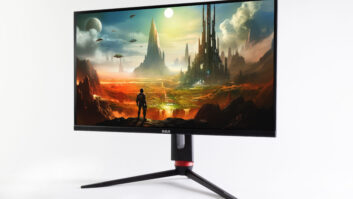Throughout my career I was always excited and more than pleased that my position offered me the opportunity to meet and chat with many of those who actually created the industry. And the best part of all that was the chance to hear the anecdotes they enjoyed telling to newcomers, for whom the old stories were brand new.
One of the first such occasions for me came in 1964 while I was working at the electronics division of the Japan Trade Center in New York City. The office actually represented the Electronics Industry Association of Japan, and at that time was focused mainly on helping develop the United States market for Japanese consumer electronics.
The World’s Fair was on, and I was given credentials for the Japanese pavilion where I met VIP visitors and showed them around the electronics section. One day I was sent over to the fair to act as shepherd for a group from RCA, and it was there that I met Dr. George Brown. (As editor of TWICE I almost always reserved the use of the Dr. title for those from the medical profession. But I did make exceptions for some of the more notable of the industry’s many Ph.D.s, and Brown was one.)
Unknown to me at the time, Brown had been RCA’s engineering point man in the development of color TV. In addition to his R&D efforts, he was also the lead combatant in the war against the CBS field sequential color system. The big difference between the two systems was that RCA’s consisted of a regular black-and-white TV signal with color information added, so that color broadcasts could be viewed on the millions of TVs already in homes (in black-and-white of course), while the CBS color signal could only be viewed in color. That required either a brand-new color TV (no prototype of which was ever shown) or a color wheel adapter for existing black-and-white TVs.
As I assume everyone already knows, the RCA system, primarily because of its black-and-white compatibility, ended up the winner.
Also at the fair was Japan’s very first color TV. Made by Mitsubishi, it was called the “Triniscope” because it used three separate 5-inch or 7-inch monochrome picture tubes and a collection of special mirrors that brought the red, blue and green images together to produce a color picture at the very rear of a large table-top cabinet. One had to look down a tunnel to view the image, which, for the time, was quite acceptable.
Well, Brown looked at this and laughed, and told me that this was the same as the first color TV RCA had put together. RCA, he said, was still working on developing a reliable color-TV picture tube when he was ordered by RCA’s founder David Sarnoff to get ready to demonstrate the compatible color system to the FCC. As CBS didn’t have a tube either and showed its system using a small screen to minimize the adverse impact of having an external color wheel, Sarnoff wanted the RCA set to have a large screen.
I’m not sure whether RCA used 18-inch or 21-inch tubes in its version of the Triniscope. But in any case, having three of either size of the long-necked tubes all facing in different directions required a massive housing. When it came time for RCA to ship the set to Washington for demonstration it was discovered that not only was it too large to fit through the door at 30 Rockefeller Plaza, it was too big to bring down in the elevator.
Fortunately, Brown told me, the set was put together in an office with a window. So to get the set out of the building, they had to remove a window and a large part of the surrounding brick work and use a roof-mounted crane to lower the TV to the street.













